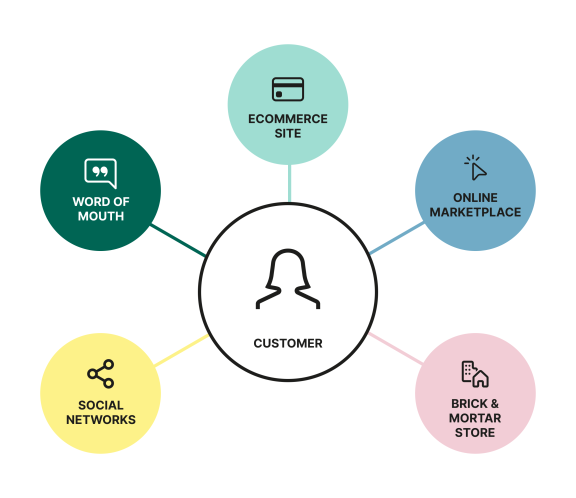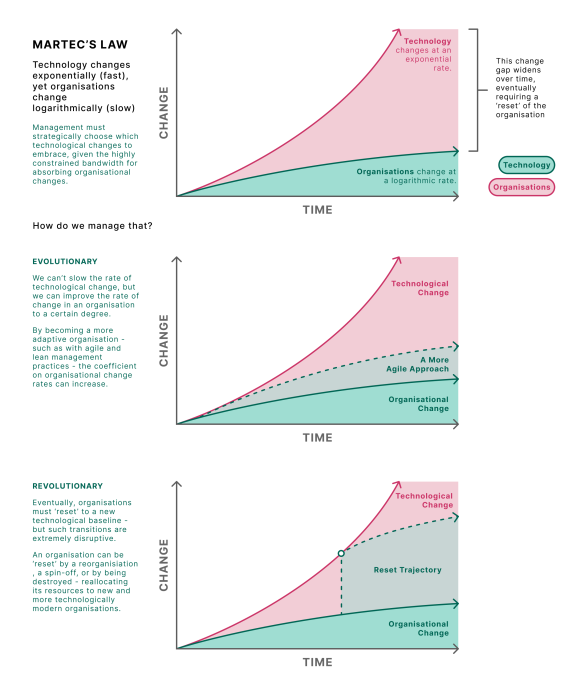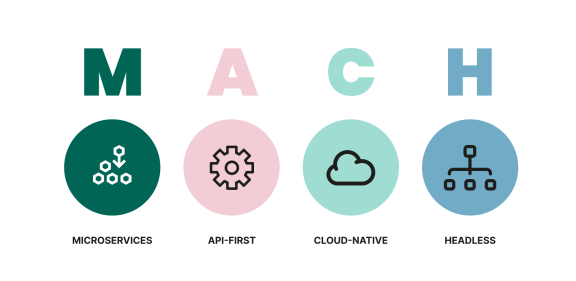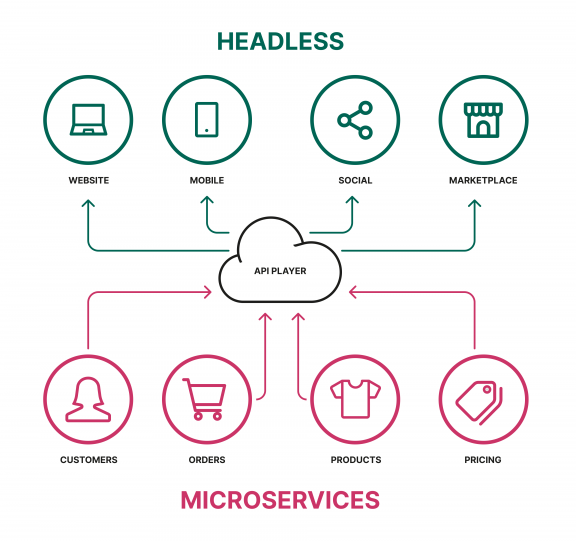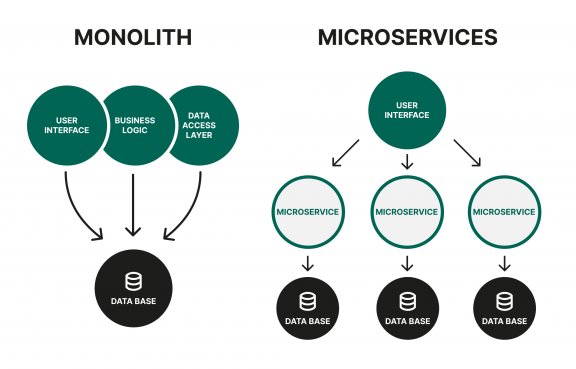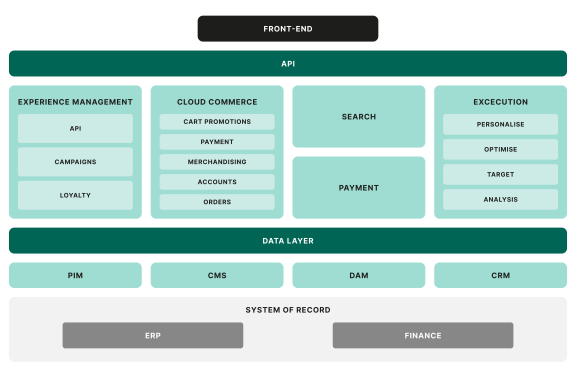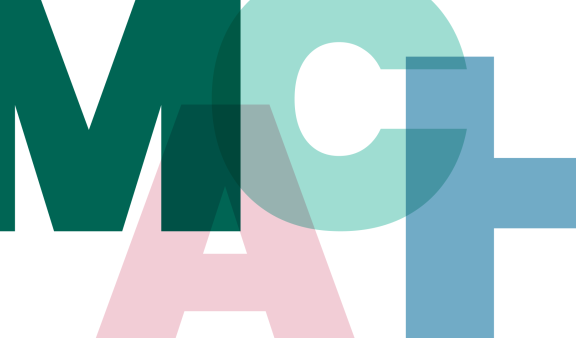
MACH Architecture sets a fresh benchmark for digital excellence
In this article, we delve into the concept of MACH and explore why adopting MACH architecture is increasingly crucial for companies. Additionally, we analyze the advantages and obstacles associated with implementing this architectural approach.
The evolving preferences of customers and dynamic market conditions are fueling the need for inventive and adaptable technological solutions. Modern-day consumers aspire to have an exceptional online user experience that enables them to make purchases swiftly and effortlessly. Consequently, adopting an agile approach becomes indispensable, encompassing both sales and technology aspects.
Martec's Law
Martec's Law outlines the correlation between technological advancements and a company's capacity to adjust accordingly. Numerous businesses are encountering challenges in keeping pace with the rapid rate of change, which can have detrimental effects on their operations. The capability to adapt, transform, and thrive is crucial for ensuring long-term sustainability of the business.
Conventional monolithic system architectures, often referred to as "all-in-one" solutions, typically lack the required innovation capabilities and customer-centricity to promptly cater to the market. In order to enable companies to swiftly innovate and effectively address customer demands, it is imperative to adopt a modular architecture that can be expanded as needed.
Adopting this approach is the sole means for companies to rapidly implement new functionalities and retain authority over their business and marketing processes. MACH technologies lend support to this approach, where each component is interconnected and scalable, allowing for interchangeability. Moreover, continuous enhancement and development of these components are facilitated to effectively adapt to evolving business requirements.
What is MACH?
MACH is an acronym representing Microservices, API-first, Cloud-native, and Headless. MACH architecture encompasses a fusion of technological principles that embrace a best-of-breed strategy. This implies that MACH serves as the optimal software solution tailored to meet specific customer requirements without imposing limitations.
M - Microservices
MACH architecture functions as a modular system due to its self-contained microservices. These microservices are independent software components designed to carry out specific business functions (such as search, CMS, or check-out). They can be developed autonomously and flexibly combined based on immediate requirements. Moreover, this architecture enables the logical separation of various business functions, allowing dedicated teams to develop them individually.
A - API First
APIs establish connections between diverse applications, systems, or services, ensuring swift and secure data transfer and facilitating the seamless integration of functionalities. Put simply, APIs enable applications to communicate and interact with one another. The key benefit of these interfaces is their ability to accommodate system expansions and thereby facilitate the creation of a comprehensive digital experience across various channels. API-first development prioritizes the creation of APIs over pre-existing software solutions. This approach guarantees that all functions within the platform are accessible through the APIs.
C - Cloud-Native
The MACH architecture incorporates the platform, along with its tools and services, directly within the cloud, rather than just storing it there. This eliminates the necessity for a local server, providing robust protection against failures and enabling seamless scalability based on demand. In essence, the platform is fully integrated into the cloud, ensuring enhanced reliability and effortless scalability.
H - Headless
A headless commerce platform refers to an e-commerce solution where the front-end (head) and back-end commerce functions are separated through APIs. This IT architecture allows for the seamless integration of microservices through APIs, enabling rapid exploration of new revenue avenues. By decoupling front-ends from the underlying business logic, it becomes remarkably simple to implement new channels like marketplaces or social media shopping. This flexibility empowers businesses to swiftly adapt and leverage emerging opportunities.
What sets MACH apart from traditional monolithic software architecture?
In the conventional approach, e-commerce software is commonly built as a unified application with limited flexibility. It follows a fixed set of rules, making even minor adjustments such as creating a new product discount or modifying the font size on the front end a challenging task. Considering the aforementioned limitations, this concept has become outdated.
The traditional software architecture defaultly adopts the monolithic software development approach. This approach involves creating a single-tier solution where components share a common platform, forming an integrated software system.
Both the enterprise and the technical architecture need to embrace flexibility as a necessity.
Challenges of MACH
Transitioning from a monolithic to a MACH architecture, however, presents not only advantages but also entails certain challenges:
Business Challenges
- Initial higher investment and management costs
- Initial development costs are higher mainly because in most cases a monolith has to be transformed into a MACH architecture
- Central store- and content management is not a given
- Increased stakeholder management
- Increased training effort due to multiple systems
- WYSIWYG and preview functionality might be limited with an “out-of-the-box” CMS
Technical Challenges
- Managing multiple solution providers and suppliers
- Increased complexity of the overall architecture
- Increased effort for maintenance and testing (end-to-end testing)
- Performance needs to be balanced
- Monitoring of the overall architecture is extensive
- Shift of development effort from back-end to front-end and potentially increased effort for API development
- Orchestration of all data from different systems
Conclusion
Companies must promptly adapt to customer needs and market dynamics, and one way to achieve this is through the adoption of MACH architecture. MACH architecture combines technology principles and is widely regarded as the most efficient software solution available for meeting unique customer requirements.
While MACH architecture provides numerous benefits, it also poses certain challenges for companies. Therefore, it is crucial that the transition to MACH architecture is carefully planned and executed by knowledgeable experts.
